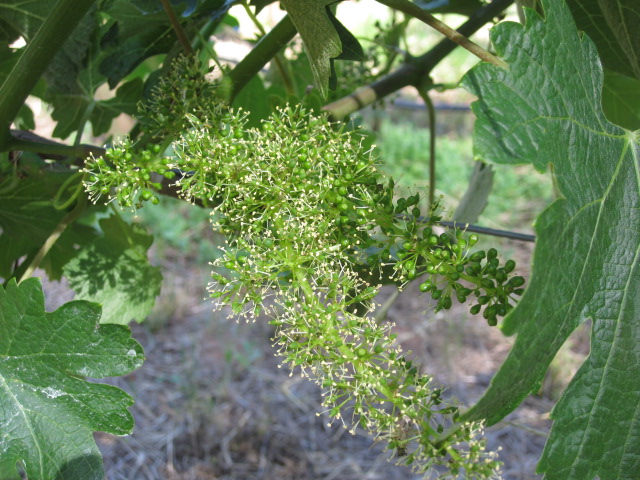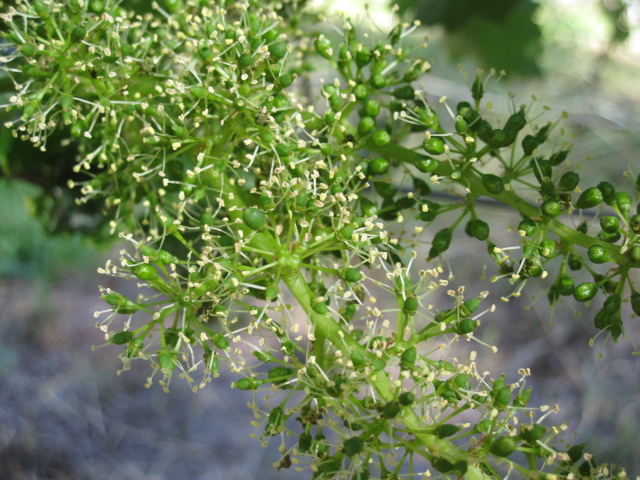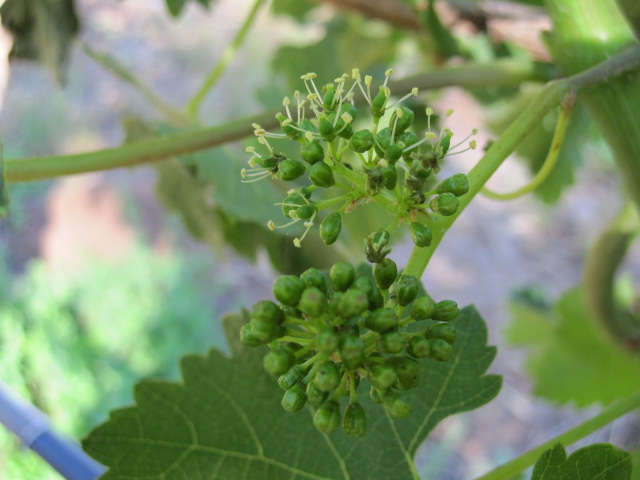It is springtime, and love is in the air….
In the plant world, especially the world of Angiosperms (flowering plants), this “love’ manifests itself in the form of flower bloom. Now, most people may not realize that a grapevine does, in fact, produce flowers. However, the flowers are so small that they may go unnoticed to the casual observer. Each grape that a vine produces started as a tiny, inconspicuous flower, and like all flowers, pollination is an essential part of fruit production. There is some debate as to the nature of grape flower pollination but it is believed that most pollination is accomplished asexually, which translates to self- pollination. You might be thinking, what’s the fun in that? Well, when it comes to grape vines, for the most part, they are all business.
During bloom, cross-pollination between different vines is possible and some countries, like Spain, do quite a bit of this intentionally. This can lead to more diversity as in the case of Cabernet Sauvignon. Most people don’t know that the origins of this very important variety happened from a chance crossing between Sauvignon Blanc and Cabernet Franc….that’s right, one of the ancestral parents of Cabernet Sauvignon is a white grape variety. Kind of mind-boggling when you really think about it but Cabernet Sauvignon did not exist as a grape variety before this random chance encounter. You might say it took the “love” of two different varieties to create the most important grape in Napa Valley and arguably the world. Ok, it’s not exactly West Side Story but it is sort of nature’s version of Romeo and Juliet, where a chance encounter changed everything.
And now that I have injected a little cheesy romanticism into the creation of Cabernet Sauvignon, it is time to get back to business.
Bloom is a very delicate time in the life cycle of the vine. Many factors can contribute to poor set. Set is the term used to describe the relative success of pollination. If set is poor, fewer flowers are properly pollinated leading to less fruit produced. Some of the factors influencing this are wind, rain, temperature and nutrients. If any of these variables is out of balance, fewer grapes are produced and quality can be affected. We as winemakers are virtually powerless in this battle for good set but what little we can accomplish is usually done at the soil nutrient level. Usually we just cross our fingers and pray to Dionysus that proper set will be realized.
It is important to keep in mind that all this pollination and plant-life intercourse is meant to help the vine propagate. The flower is pollinated, the grape is produced, the grape is eaten and the seeds within the grape are scattered to produce more vines. This is the basic life cycle of a grapevine. Despite what many winemakers (and wine consumers) believe, the vine is not producing grapes in order to help us make wine. That is strictly a side benefit of this miraculous plant that humans have learned to harness for their own selfish desires: to drink wine and be happy. As important as bloom and set are for making great wines, in the “mind” of the vine these are just essentials for survival. So despite the seemingly fragile nature of bloom and set, vines (and angiosperms) in general, have been making “plant love” for longer than humans have roamed the Earth and that is a truly humbling thought. In the end, it is a strictly symbiotic relationship between vine and humans that is essential for making great wine. And for that, Mother Nature, we thank you!



